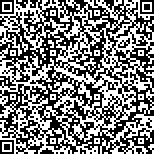| 引用本文: | 都雪,王齐东,张超文,李为,冯伟松,张堂林,刘家寿,李钟杰.洪泽湖轮虫群落结构及其与环境因子的关系.湖泊科学,2014,26(2):269-276. DOI:10.18307/2014.0214 |
| DU Xue,WANG Qidong,ZHANG Chaowen,LI Wei,FENG Weisong,ZHANG Tanglin,LIU Jiashou,LI Zhongjie.Community structure of rotifers in relation to environmental factors in Lake Hongze. J. Lake Sci.2014,26(2):269-276. DOI:10.18307/2014.0214 |
|
| |
|
|
| 本文已被:浏览 10472次 下载 5163次 |

码上扫一扫! |
|
|
| 洪泽湖轮虫群落结构及其与环境因子的关系 |
|
都雪1,2, 王齐东1,2, 张超文1,2, 李为1, 冯伟松1, 张堂林1, 刘家寿1, 李钟杰1
|
|
1.中国科学院水生生物研究所淡水生态与生物技术国家重点实验室, 武汉 430072;2.中国科学院大学, 北京 100049
|
|
| 摘要: |
| 2010年5月至2011年2月对洪泽湖轮虫进行季度采样,分析了洪泽湖轮虫的种类组成、时空分布及其群落结构与环境因子的关系.结果表明,洪泽湖共观察到轮虫17属34种,优势种为螺形龟甲轮虫(Keratella cochlearis)、前节晶囊轮虫(Asplanchna priodonta)、长肢多肢轮虫(Polyarthra dolichoptera)、萼花臂尾轮虫(Brachionus calyciflorus)和曲腿龟甲轮虫(Keratella valga).轮虫种类的空间分布格局呈现较大差异,种类数在北部成子湖最高(27种),西南部湖区次之(26种),东部沿岸带最低(19种);而密度则表现为西南部湖区略高于成子湖,东部沿岸带最低.轮虫的群落结构季节差异明显,密度和生物量在春季最高,秋季次之,而夏季最低.典范对应分析结果表明,水温、溶解氧及叶绿素a等因子对轮虫种类的季节变化及密度生物量的影响最大;总磷、总氮及可溶性无机氮等水体中的营养盐也是影响轮虫群落结构的重要因素. |
| 关键词: 轮虫 群落结构 环境因子 洪泽湖 典范对应分析 |
| DOI:10.18307/2014.0214 |
| 分类号: |
| 基金项目:公益性行业(农业)科研专项项目(200903048-04);国家自然科学基金项目(30830025);淮安市科技支撑计划项目(IHB/CN/2009103)联合资助 |
|
| Community structure of rotifers in relation to environmental factors in Lake Hongze |
|
DU Xue1,2, WANG Qidong1,2, ZHANG Chaowen1,2, LI Wei1, FENG Weisong1, ZHANG Tanglin1, LIU Jiashou1, LI Zhongjie1
|
|
1.State Key Laboratory of Freshwater Ecology and Biotechnology, Institute of Hydrobiology, Chinese Academy of Sciences, Wuhan 430072, P. R. China;2.University of Chinese Academy of Sciences, Beijing 100049, P. R. China
|
| Abstract: |
| The spatial-temporal changes in rotifer species composition and community structure and their relationship with key environmental factors were investigated seasonally from May 2010 (spring) to February 2011 (winter) in a shallow freshwater lake, Lake Hongze, China. Totally 34 species of rotifer, belonging to 17 genera, were identified during the seasonal sampling. Keratella cochlearis, Asplanchna priodonta, Polyarthra dolichoptera, Brachionus calyciflorus and Keratella valga were the dominant species. Lake Hongze has three main areas that are Chengzihu, southwest and east area. The rotifer distribution in the three main areas was significantly different. There were 27, 26 and 19 species in Chengzihu, southwest, east area, respectively. Meanwhile, the maximum density and biomass of rotifers was found in the southwest area of Lake Hongze while the minimum was found in the east area. In terms of seasonal variation, the density and biomass of rotifer was highest in spring, with higher values in autumn. The density and biomass in summer was lowest in the four seasons. Their relationship with environmental factors was analyzed using canonical correspondence analysis (CCA). From the result of CCA, environmental factors such as water temperature, dissolved oxygen and chlorophyll-a that representing seasonal variations of water quality were significantly correlated with the Axis 1 and affected the composition and the density of rotifer community. Moreover, environmental factors related to nutrient concentrations such as total phosphorus, total nitrogen and dissolved inorganic nitrogen were also important nutrient factors which influenced the community structure of rotifer of Lake Hongze. |
| Key words: Rotifer community structure environmental factors Lake Hongze CCA |
|
|
附件
|
|